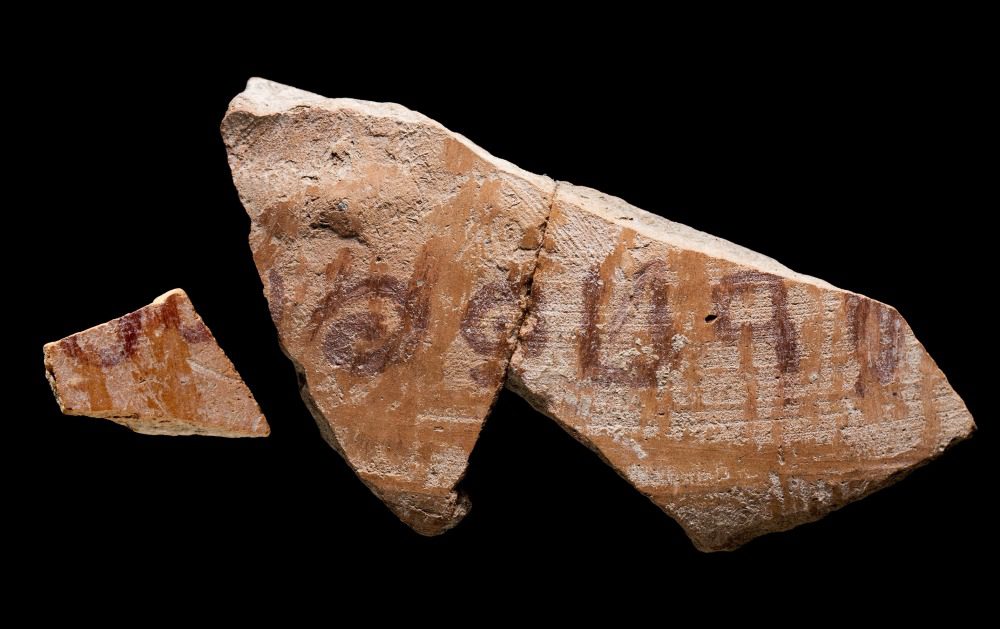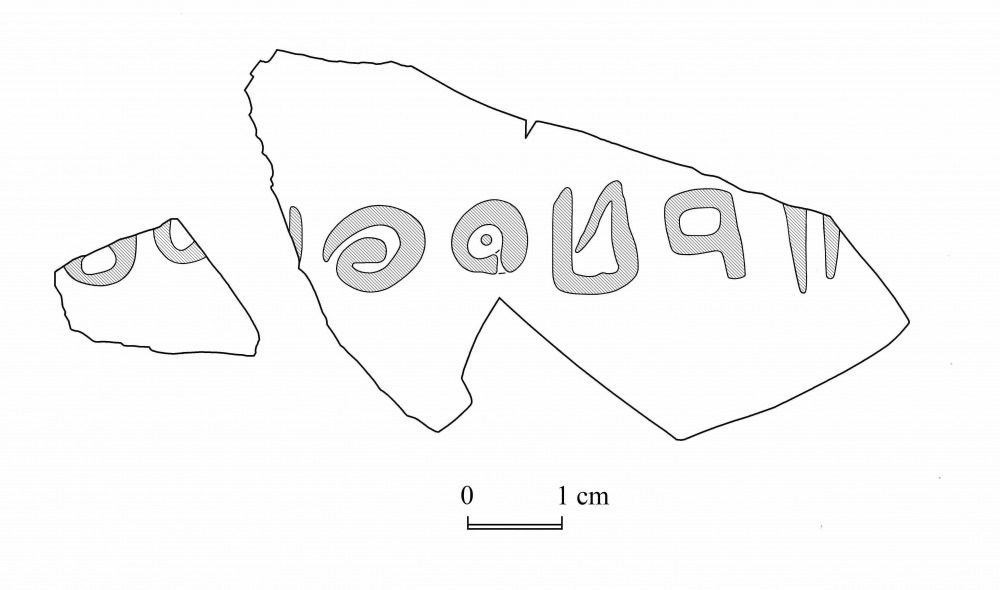The “Jerubba’al inscription is inscribed on a clay vessel (“ostracon”), in the Proto-Canaanite script. The first part of the inscription was discovered in 2019, at Khirbet al-Rai, some 4 km. from Lachish, in a layer dated to a time between the end of the 12th century BCE – early 11th century BCE. The inscription was discovered within a silo (that received the catalog name “A310”). In 2020, with the full exposure of the silo, another piece of the inscription was discovered. Thus, the different pieces hint that the inscription was originally longer than what was discovered. This finding was deciphered by Prof. Christopher Rollston of George Washington University.


The inscription contains a total of three pieces with eight letters inscribed on them. While two of the broken pieces suit each other, the third is not, which makes deciphering the inscription harder. On the two pieces that match, five letters are seen. The second to fifth letters are understood as “RB’L”, and the first letter, which is in the broken side of the sherd, is said to match the letter “Y”, and thus the personal name “YRB’L” (Jerubba’al) was deciphered. There are marks of another letter but it cannot be identified.
First, the importance of the inscription is that it is the first evidence we have, of the continuation of the Proto-Canaanite script after the end of the Late Bronze Age (13-12th centuries BCE) and the Iron Age IIa period (beginning in the 10th century). Secondly, this inscription, along with the inscriptions found at Khirbet Qeiyafa (the “Ishba’al” inscription) and Tel Beth Shemesh attests to personal names in that period in the Shephela region. The name “Jerubba’al” includes the name of the Canaanite god “Ba’al”, and it appears in the biblical text: “So because Gideon broke down Baal’s altar, they gave him the name Jerub-Baal that day, saying, “Let Baal contend with him.” (Judges 6:32).
There are, however, other scholars who emphasize the difficulty in reading the inscription, and that it is more plausible that the name that appears on it is “Ezerba’al” – a name that does not appear in the biblical text.



Source:
Rollston, C.; Garfinkel, Y.; Keimer, K. H.; Davis, G. and Ganor, S. “The Jerubba‘al Inscription from Khirbet al-Ra‘i: A Proto-Canaanite (Early Alphabetic) Inscription”. Jerusalem Journal of Archaeology, vol. 2 (2021): pp. 1–15.

